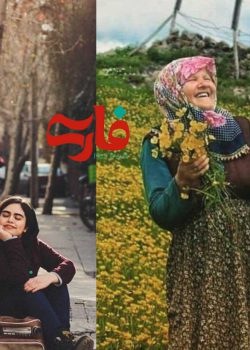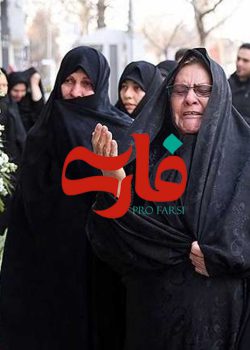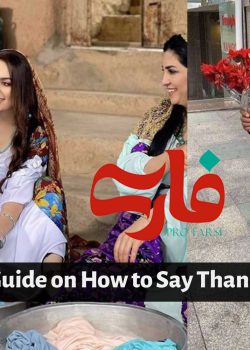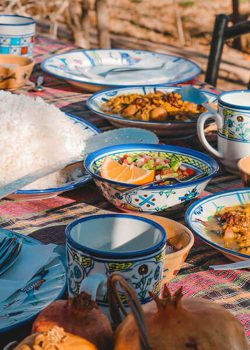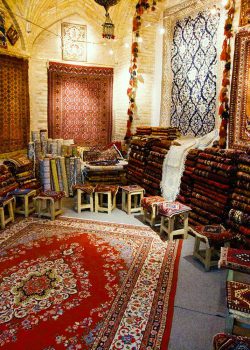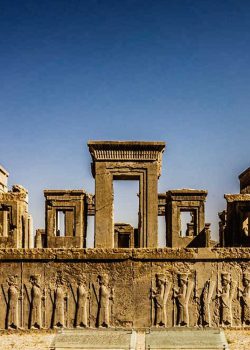Iran has a vast and enthralling variety of native flowers due to its distinct topography and geography. The vast biodiversity of Iran is a direct outcome of the country’s various weather patterns, which include four different seasons and varying climatic conditions.
Thanks to the country’s rich biodiversity, a wide variety of plant and animal life has found a home in Iran. Essentially, the native flowers of Iran are a priceless asset that enriches the country’s ecological riches and cultural legacy.
In this article, we will introduce Persian flower names. Enjoy these flowers.

An Overview of Iran’s Native Plants and Flowers
Iran’s high richness of flora and fauna directly results from the range of climates and weather conditions caused by the country’s four seasons. Like all other life forms, plants adjust to their specific habitat by adjusting to changes in water, temperature, and other environmental factors.
Some plants are so adaptable that they become native to a certain area and are no longer seen elsewhere. One example is the halophytic plant community that dominates the desert and arid parts of Iran due to its tolerance for high salt.
Some of Iran’s natural plants can be propagated abroad, but it doesn’t change their origin. Iranian native plants are abundant and diverse, adding to the country’s rich botanical tapestry, thanks to Iran’s varied ecosystems and habitats. The ecological balance and richness that define Iran’s natural landscapes depend on the preservation and knowledge of these local species.
Top Persian Flower Names
Here is a complete list of the best Persian flower names based on alphabetic order:
Persian Flower Names Start With A
- Arabis Blepharophylla Fruhlingszauber
- Achimenes Little Beauty
- Asparagus Densiflorus
- African Violet (Saintpaulia)
- Amaranthus caudatus
- Anchusa azurea Loddon Royalist
- Anthemis tinetoria
- Armeria Juniperifolia
- Aronia arbutifolia
- Allium schoenoprasum
- Astrophytum ornatum
- Achimenes Little Beauty
- Amur Adonis
- Aster
Names of Persian Flowers Start With B
- Banksia coccinea
- Bergenia Bressingham White
- Bouvardia ternifolia
- Brunnera macrophylla
- Browallia Speciosa
- Brunnera macrophylla
- Bougainvillea
- Brunnera macrophylla
- Bicolor Pineapple Lily
- Bugleweed
- Bougainvillea

Iranina Flower Names Start With C
- Clivia miniata
- Chrysanthemum Peach Brientner
- Chrysanthemum Marlene jones
- Chrysanthemum Segetum
- Colutea arborescens
- Clethra arborea
- Clethra alnifolia
- Coryphantha vivipara var arizonica
- Camellia
- Camellia japonica
- Cardamine
- Cardamine enneaphyllos
- Camellia rosaeflora
- Calceolaria polyrrhiza
- Cast Iron Plant
- Celosia argentea Century Yellow
- Celosia argentea Olympia Series
- Celosia cristata Fairy Fountains
- Chamomile
- Coreopsis lanceolata
- Clarkia grandiflora
- Corallina Compacta
- Crepis aurea
- Crocus angustifolius
- Crocus Sativus
- Cosmos atrosanguineus
- Cereus Peruvianus
- Clethra alnifolia
- Colchicum autumnale
- Colutea arborescens – Bladder Senna
- Celmisia walkeri
- Clarkia grandiflora
- Cotoneaster Cornubia
- Cotoneaster frigidus
- Cotoneaster horizontalis
- Chionodoxa luciliae
- Cyclamen coum
- Cyclamen Cilicium
- Chionodoxa luciliae
- Ctenanthe lubbersiana
- Centaurea hypoleuca john coutts
- Centaurea hypoleuca john coutts
- Canna Assaut
- Concord Streptocarpus
Persian Flower Names Start With Letter D
- Dog’s Tooth Violet
- Daphne mezereum
- Delphinium Summer Skies
- Dracaena deremensis Warneckei
- Dracaena sanderiana
- Dracaena marginata Tricolor
- Doronicum x excelsu Harpur Crewe
- Delavay’s Incarvillea
- Dutch Narcissus
Flower Names in Persian Start With E
- Erysimum Bowles Mouve
- Erysimum hieraciifolium Orange Bedder
- Eryngium x oliverianum
- Elaeagnus x ebbingei
- Euonymus myrianthus
- Echinops ritro Veitchs Blue
- Euphorbia rigida
Iranina Flower Names Start With Letter F
- Faucaria
- Faucaria Tigrina
- Furfuryon
- Fremontia
- Ferocactus latispinus
- Freesia
- Fittonia
- Foxglove
- Fire Dragon Aethionema
- Flowering Maple
- False Armeria
- Fatshedera
Persian Names for Flowers Start With G
- Ghrysanthemum George Griffiths
- Geranium Maderense
- Geranium Ibericum
- Geranium Phaeum
- Gerberajamesonii
- Gentiana kingfisher
- Gentiana Ternifolia
- Gentiana Asclepiadea
- GenTiana Verna
- Gentiana Saxosa
- Gentiana septemfida
- Geranium hymalayense
- Geranium maderense
- Geum reptans
- Gynadriris sisyrinchium
- Gazania
- Gazania pinnata
- Guzmania
- Guzmania minor
- Gaultheria
- Gladiolus
- Godetia
- Galanthus
- Gomphrena globosa
- Golden Cascade Rose
Wonderful Persian Flower Names Start With H
- Helleborus Lividus
- Helleborus argutifolius
- Hemerocallis citrina
- Hunnemannia Fumariifolia
- Helleborus Orientalis
- Hydrangea macrophylla
- Hydrangea (Hydrangea macrophylla)
- Himalayan Honeysuckle (Leycesteria Formosa)
- Hardy Gloxinia (Incarvillea delavayi)
Iranian Flower Names With Best Odors Start With I
- Indigofera decora
- Impatiens hybrid
- Inula royleana
- Iris
- Iris sibirica
- Impatiens Red Star
Flower Names in Persian Start With Letter J
- Japanese Dog’s Tooth Violet (Erythronium japonicum)
- Joe-Pye Weed (Eupatorium Purpureum)
- Japanese Fatsia (Fatsia japonica)
- Juniper Thrift (Armeria Juniperifolia)
- Japanese Aralia (Fatsia japonica)

Names of Persian Flowers With L
- Lithops Schwantesii
- Linum arboreum
- London Rocket
- Laburnum anagyroides
- Lanceleaf Coreopsis
- Lonicera fragrantissima
- Lonicera japonica
- Lupinus chandelier
- Lantana camara
- Lilium
- Lilium auratum
Persian Flower Names Start With M
- Medium Epimedium
- Milky Bellflower)
- Meloformis Spurge
- Marsh Palm
- Malva
- Matricaria chamomilla
- Monarda Cambridge Scarlet
- Monstera Deliciosa
Names of Iranian Flowers With N
- Nigella damascena
- Nicotiana Sylvestris
- Nerium oleander
Persian Flower Names With Letter O
- Onopordun acanthium
- Oxalis purpurea
- Orientals Hyacinthus
- Osteaspermum hybrids
- Osteopermum Jucundum
Names of Iranian Flora Start with P
- Papaver rhoeas
- Papaver Somniferum, Paeony
- Papaver orientale
- Papaver Somniferum
- Platycodon grandiflorus
- Platycerium bifurcatum
- Pachycereus priglei
- Phlomis russeliana
- Phlomis purpurea
- Platycodon grandiflorus
- Pelargonium
- Phlox
- Phlox divaricata
- Phytolacca acinosa
- Phyllocactus
- Philodendron Heartleaf
- Perfoliatum Silphium
- Platycerium bifurcatum
- Platycodon grandiflorus
- Pelargonium
- Papaver rhoeas Mother of Pearl
- Picotee Series
- Purple Aster
- Paulownia tomentosa
- Pachystachys lutea
- Pansy
- Pectranthus coleoides marginatus
- Penstemon isophyllus
- Peperomia obtusifolia
- Peperomia Pereskiifolia
- Periwinkle
- Phlox paniculata
- Pink Cloud Kolkwitzia amabilis
- Plectranthus coleoides marginatus
- Pulsatilla vulgaris
Persian Flower Names With Letter R
- Rat Tail Cactus
- Red Chokeberry
- Red Shank Rhododendron
- Rhododendron Red Shank
- Rhododendron Pink Pearl
- Rosa
- Rosa Buff Beautg
- Rosa Angel
- Romneya Coulteri
Flowers in Persian Begin With the Letter S
- Salix reticulata
- Scindapsus aureus
- Snowdrop
- Strelitzia
- Sweet Pea
- Salvia officinalis tricolor
- Schizostylis coccinea
- Silene vulgaris
- Syclamen Cilicium
- Sedum
- Silphium perfoliatum
- Sinningia Red Flicker
- Statice
- Stokes’ Aster
- Swordleaf Inula
- Spring Starflower
- Silybum marianum
- Silybum marianum
- Star of Bethlehem
Persian Flower Start With T
- Tagetes erecta
- Tagetes Patula Naughty Marietta
- Tagetes Segetes
- Taqetes Gem Series Lemon Gem
Iranina Flower Begin With V
- Viola X wittrockiana Azure Blue
- Vinca minor
- Verbena Bonariensis
- Veronica peduncularis
- Veronica spicata subsp Inc ana
- Veronica spicata Rotfuchs
- Veronica gentianoides
Beautiful Persian Flower Names Start With W
- Winter Aconite
- White Whitlow Grass
- White Armeria
- Wheatr
- Wake Robin
- Winter Honeysuckle
- Wisteria sinensis
Lovely Persian Flower Names Begin With Y
- Yucca Gloriosa
- Yellow Dog’s Tooth Violet
- Yellow Whitlow Grass
Persian Flower Names Start With Z
- Zephyranthes grandiflora
- Zygocactus truncates
What Spring Flowers Are Available in the Iranian Flower Market?
| Persian Flower Names | Persian Flower Names |
| Achila | Alster |
| Anamatila | Anthurium |
| Anmoon | Anturium |
| Aroos-e Irani | Bomadaran |
| Cacho | Davoodi Miniatori |
| Davoodi Rashti | Farziya |
| Ghaznaghel | Gerbera |
| Gol-e Gypsumfila | Kaleh, Shipouri |
| Lisianthus | Lily |
| Lily of the Valley | Marigold |
| Maryam | Mimon |
| Mina | Mokhaleseh |
| Persian Bride | Persian Flowers |
| Peony | Rose Hollandi |
| Rose Irani | Rose Meshki |
| Rose Miniatori | Sumbol-e Moqavem |
| Sunflower | Shabboo |
| Silk | Tulip |
| Veronica | Zanbaq |
Persian Flowers: Uniqueness and Beauty in Iranina Flowers
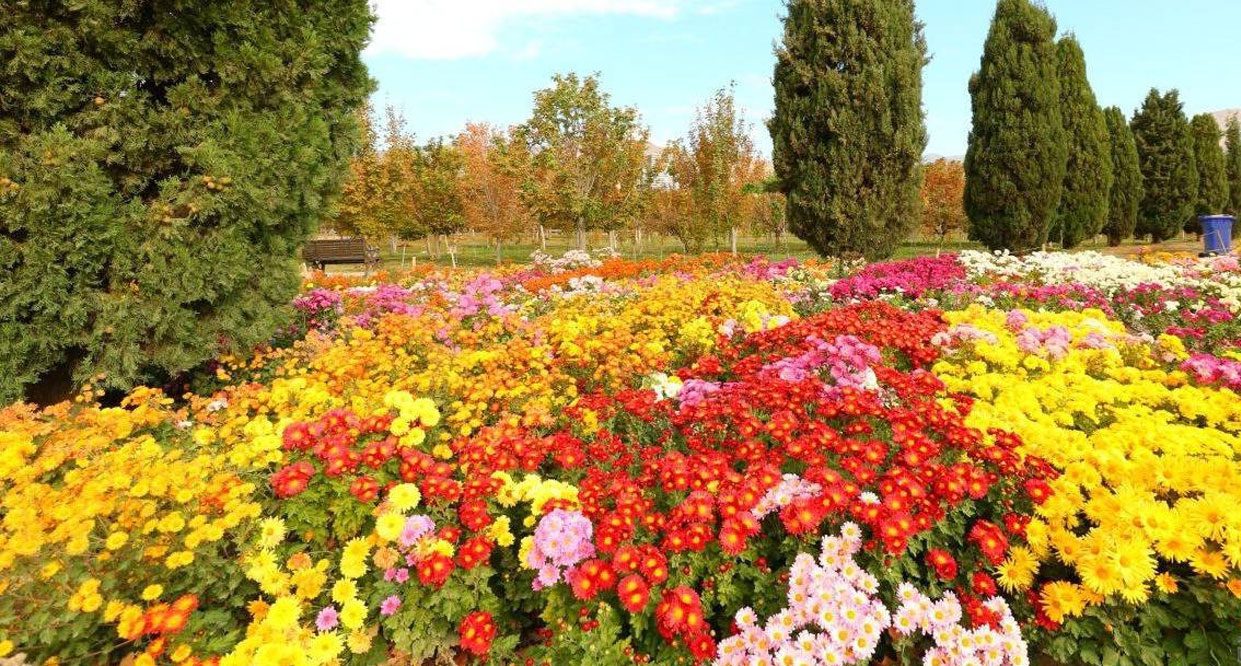
Iran stands out from other countries in the area because of its unique flowers, which exhibit the rich flora present across the country. The natural flora of Iran is quite varied due to the country’s many climatic zones.
1- Lilium Ledebourii (Forty-Column Lily)
The Forty-Column Lily, or Lilium Ledebourii, is a very unusual lily that is endemic to Iran. The provinces of Gilan, Mazandaran, Ardabil, and even certain portions of Azerbaijan are prime locations for its cultivation in northern Iran.
Its main habitat is Damesh, a small town near Rostamabad, Gilan. This tall Iranian flower usually blooms from May to June and lasts approximately two months; its height ranges from 50 to 150 cm.
It typically produces 4–10 blooms; however, there have been exceptional examples with more than 15 blossoms. The lily is named “Forty-Column” (Chelcheraq) because its 7-centimeter-wide blooms give the impression that it lights up the night. Some people consider it a lantern because of its unusual shape; others even give it that name.
2- Fritillaria (Checkered Lily)
The fritillaria, often known as the checkered lily, is an important historical flower endemic to Iran. It is a member of the lily family and grows downwards, unlike other flowers. Fritillaria has accented monuments like the columns of Sassanian palaces and the gardens of Persian rulers, playing an important part throughout Iran’s rich history.
Fritillaria, also known as “Wazgon,” has a tragic link in Iranian mythology to the murder of Kaykavous’s son Siavash. According to legend, following Siavash’s unjust execution at the hands of the Turanians, Fritillaria cried for him, and its colorless tears fell to the soil, representing Iran’s purity. The folklore surrounding Fritillaria has earned it many names, including “Legendary Iranian Flower,” “Mary’s Tear,” and “Tear Lily.”
3- Sternbergia sp (Golden Crown)
The Golden Crown is mostly found in Central Asia and is a member of the Narcissus family. A few of its names include Yellow Autumn Saffron, Winter Narcissus, Autumn Daffodil, and Plain Saffron.
Only three of the seven species—Strahlenbergia Korshinskyi, Sternbergia Lutea, and Sternbergia greuteriana—are endemic to Iran. The others are found in southwestern Europe and southwestern Asia.
4- Saffron (Crocus sativus)
The saffron flower, scientifically known as Crocus sativus but more often called “Za’faran” or “Zerparan,” is another native Iranian flower. It has earned the moniker “Red Gold of Iran.” Saffron is the most costly spice in the world right now, and its origins are in Iran.
The stigma and styles of the flower are harvested and dried to make saffron. After drying, saffron threads enhance various cuisines’ taste, aroma, and color. Saffron isn’t just great in the kitchen but also medicinal. As a spice, saffron is often found in warmer climates, although it has also been found in cooler towns like Gilan and Hamedan.
5- Iranian Iris (Iris Meda)
The Iranian iris, scientifically known as Iris Meda, is one of over 300 species of the fragrant and long-lived flowering plant known as the cold iris. It has a unique significance in Zoroastrian mythology and grows well in light, acidic soils. As a bearded rhizomatous iris group member, the Iranian Iris, also known as “Gol Nowruzi,” is one of several iris species.
6- Cyclamen (Cyclamen Persicum)
The Primulaceae family counts 23 species of cyclamen, the most common of which is Cyclamen Persicum, which originates in Iran, the Mediterranean, and the Caucasus. One well-known species, Cyclamen Persicum, comes from Iran and blooms in the northern provinces throughout the winter. The wide, heart-shaped leaves of the cyclamen plant also go by the names “Pamchal” and “red, white, pink, and burgundy.”
7- Iranian Viola (Viola)
There are more than 500 species of violas, a family of plants including Iranian violas, originating in Europe and Northwestern Asia. Iran is home to nineteen species of Viola, most of which inhabit the country’s wet, mountainous northwestern, western, and northern areas.
Most people think of purple when they hear “viola,” but many species can have any hue from yellow to white to magenta and beyond.
8- Bee Orchid (Ophrys apifera)
One of the many blooming plant families worldwide is the Orchidaceae, including the Bee Orchid (Ophrys apifera). Bee orchids, or “Safarjal” in Persian, are among Iran’s rarest and most prized orchids. Among the many wild orchid species found in Iran, the Bee Orchid stands out due to its striking resemblance to a bee, which adds to its charm.
9- Iranian Rose (Rosa)
Another Iranian flower is the rose, which goes by a few different names: “Gol Sorkh,” “Gol Mohammadi,” and “Souri.” It is a member of the Rosaceae family and originally hails from Russia, Europe, and the Middle East.
With the discovery of new variants every year, the number of rose species has surpassed 20,000. Rose essence has many culinary and aromatic applications, including in jams and teas. One gram of its essence is worth as much as one gram of gold on the worldwide market, making it the most costly substance in the world.
10- Iris Dogtooth Violet
Among the many bulbous monocot blooms that make up the iris family is the iris dogtooth violet. North America, temperate Asia, and Europe have around 25 species. In contrast, the Dogtooth Violet is the only species in this family acknowledged as a native Iranian flower; it is endemic to the northern Alborz mountain range and the highest alpine beech woods in the country.
These uncommon blossoms appear between December and April. Large, inverted blooms with a tubular base and a 10 to 15 cm height are characteristic of dogtooth violets. The fruit of this lovely flower develops from the blossoms over time; they become capsules with several seeds within. These lovely blossoms are adorned with two bract-like structures that resemble petals and are marked with brown.
11- Colchicum Chalous
You may recognize this bulbous monocot plant as Colchicum Chalous; it is a member of the Colchicaceae family and the Colchicum order. Another name for it is Meadow Saffron. There are over forty species of this plant in the Mediterranean area, seven Iranian. At the top of its stalk, colchicum displays cluster-shaped blooms ranging from purple and blue to different tones of red.
Among Iran’s natural flowers, Colchicum Chalous is rather uncommon. As its name implies, the Chalous Valley is its principal habitat. To see this unusual bloom, you must visit the Chalous rocky cliffs between 300 and 1100 meters tall during February–March and March–April. This uncommon flower only grows one bloom per bulb and may reach a height of 30 cm.
Conclusion
To sum up, the captivating flower names that embellish the complex tapestry of Persian flora represent this ancient region’s cultural and ecological variety. The Persian flower names—from the majestic and fragrant rose (Gol-e Sorkh) representing love and beauty to the graceful and elegant tulip (Laleh)—profoundly link the country’s history and customs.
Although this short introduction has touched on a few of the most famous Persian flowers, it is crucial to remember that Iran’s beautiful gardens are overflowing with countless others, each adding to the country’s blossoming cultural legacy with its special meaning and beauty.
FAQs
What Is the Best Way To Preserve Cut Spring Flowers?
When caring for cut spring flowers, slice the ends of the stems at an angle and submerge them in water immediately. Ensure the water is debris-free, and don’t let any leaves enter. After watering every two days, remove any excess foliage and cut the stems.
What Spring Flowers Does the Iranian Flower Market Offer?
The Iranian flower market offers 37 different varieties of cut spring flowers.
Read More:
Persian Tea: A Symphony of Flavor, Tradition, and Togetherness
Related Posts




